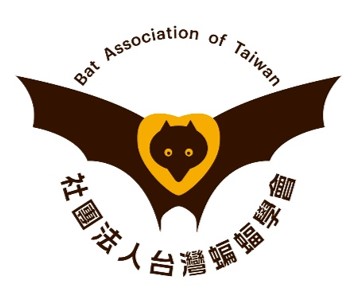蝙蝠研究
1998_南投縣中寮地區台灣葉鼻蝠生殖生態學研究_陳健戊
出版年份:1998
研究生:陳健戊
分類:碩士論文
題目:南投縣中寮地區台灣葉鼻蝠生殖生態學研究
Title:Reproductive Ecology of Taiwan Leaf-nosed Bat, Hipposideros terasensis, in Chungliau Area Nantou County
摘要:
由1997年1月起,於南投縣中寮鄉(120o44''E, 23o55''N)對棲息於一廢棄隧道內之台灣 葉鼻蝠(Hipposideros terasensis)進行生殖週期及幼蝠出生後成長發育之研究,並 記錄其整年的族群變動情形。7月記錄到該洞穴最大的族群量(1130隻)是因為已獨立 的幼蝠加入族群,之後數量下降,並有變動。於1998年1月底至2月底之冬季,所有蝠 群飛離該地,3月又陸續返回。
對雄蝠的睪丸及副睪、雌蝠的卵巢及子宮進行組織切片的光學顯微鏡檢視發現,雄蝠睪 丸的生精現象於4月開始,成熟精子於6月大量出現,8月底後,管腔已呈中空狀而無精 子存在,副睪管腔只剩殘存精子,亦無精子儲存現象。另外,雄蝠前額囊腫脹的時間似 乎與生精現象相互配合,在6月生精現象達高峰時,有黑色臘狀物質自前額囊分泌出。 在雌蝠方面,於6月可見卵巢中許多成長中的次級濾泡,7月中旬至8月上旬可見成熟之 葛蘭氏濾泡(Graafian follicle),8月下旬後卵巢中黃體出現,數目為1。雖未觀察 到排卵及受精現象,但由8月卵巢中出現的黃體及子宮內游離的桑椹胚(morula)可知, 排卵、受精皆發生在7、8月間。9月的子宮內已有著床早期屬於囊胚期(blatula stage)與原腸胚期(gastrula stage)的胚胎出現,直到3月的採樣中,才觀察到屬於 原條期(primitive streak stage)神經板(neural plate)的胚胎形成。4月子宮內 成形胎兒出現,5月中下旬即進入生殖哺育期。台灣葉鼻蝠在生殖的特性上是屬於延遲 胚胎發育(delayed embryonic development)的形式,而且是左側子宮懷孕及單胎分娩(monotocous)。
在幼蝠成長方面,於5月15日觀察到幼蝠出生,初生幼蝠前臂長為41.2±2.9 mm,體重 為16.2±1.4 g,分別佔產後母蝠的45﹪與28﹪,幼蝠的腹毛於出生後7.7±2.6天後長 出,7.8±2.7天後耳殼豎立,犬齒於10.7±2.1天後長出,眼睛於出生16.7±3.7天後 張開。經由對上標幼蝠前臂長、體重與第4指指骨與掌骨間軟骨帶之持續測量得知,幼 蝠成長至第5週大時,前臂長與體重已達成體之99﹪與72﹪。並由前臂長與軟骨帶的成 長資料,得到估算幼蝠年齡的方程式,當前臂長≦81.7mm時,使用出生後至第19天前 臂長成長公式:出生天數=0.42(前臂長)-16.19;當前臂長>81.7mm時,則使用出 生後第14天至第60天軟骨帶成長方程式:出生天數=-8.46(軟骨帶長度)+75.52。 將上述兩個方程式合併使用,可以估算台灣葉鼻蝠出生後第1天至第60天之間的年齡。
Abstract:
The reproductive cycle, post-natal growth and development, and population dynamics of a colony of Hipposideros terasensis were investigated from the beginning of January 1997. This maternity colony roosted in a waste tunnel in Chungliau, Nantou County (120o44''E, 23o55''N). The maximum population size (N=1130) was recorded in July, when independent young were added to the population. After July, the population declined and fluctuated until late January and late February in 1998. At this time the population declined to zero,as all the bats moved to other roosting sites for the winter. Bats began returning to the tunnel in March 1998. Testis with epididymis in males (N=31) and ovaries and uterus in females (N=49) were removed, serially sectioned, and examined under a microscope. In males, spermatogenesis began in April, and peaked in June, when sperm was most abundant in the seminiferous tubules and ductus epididymidis. By late August, the lumen were empty and no sperm was found in the seminiferous tubules. Some remained in the ductus epididymidis, however, no sperm storage was observed. Observation of external morphology, showed that in the males the swelling of the frontal sac occurred during a period from April to October and appeared to be correlated with spermatogenesis. During the June peak, black waxy substances were also excreted by the sac. In females, many developing secondary follicles were observed in the obary in June. Graafian follicles began to develop in mid-July and early August. After late August, a single corpus luteum appeared. Although ovulation and fertilization was not observed, it was possible to determine that it occurred between late July and early August by examination of the Graafian follicle and corpus luteum, and by the presence of a 16 celled morula in the uterus in August. In September, early implanted blastula and gastrula were observed in the uterus of two females. From Septermber until March, the neural palte formation of primitive streak stage of embryonic development was observed in two individuals. Fetal development occurred in April with parturition mid-May. Hipposideros terasensis is monotocous, demonstrates delayed embryonic development, and shows sinistral dominance in the bicornute uterus. Neonate forearm length (41.2+2.9 mm) and body weight (16.2+1.4 g), are 45% and 28% that of the postpartum females, respectively. There was no significant difference between newborn males and females. Ventral hair growth began in 7.7+2.6 days, ears erected 7.8+2.7 days, canines erupted in 10.7+2.1 days, eyes opened in 16.7+3.7 days. Forearm length, body weight and epiphyseal gaps of the fourth metacarpal-phalangeal joint measured 2 or 3 times weekly. Forearm length and body weight reached 99% and 72% that of the postpartum females in the fifth week after parturition. The data of forearm length and the total epiphyseal gap length yielded two equations which can be used to estimate the age up to 60 days after birth. Using forearm length <81.7 mm, age in days=0.42(forearm length) -16.19, when forearm length is >81.7 mm, the epiphyseal gap is used to calculate age, age in days=-8.46(gap length)+75.52.-1 -aReproductive Ecology of Taiwan Leaf-nosed Bat, Hipposideros terasensis, in Chungliau Area Nantou County.
